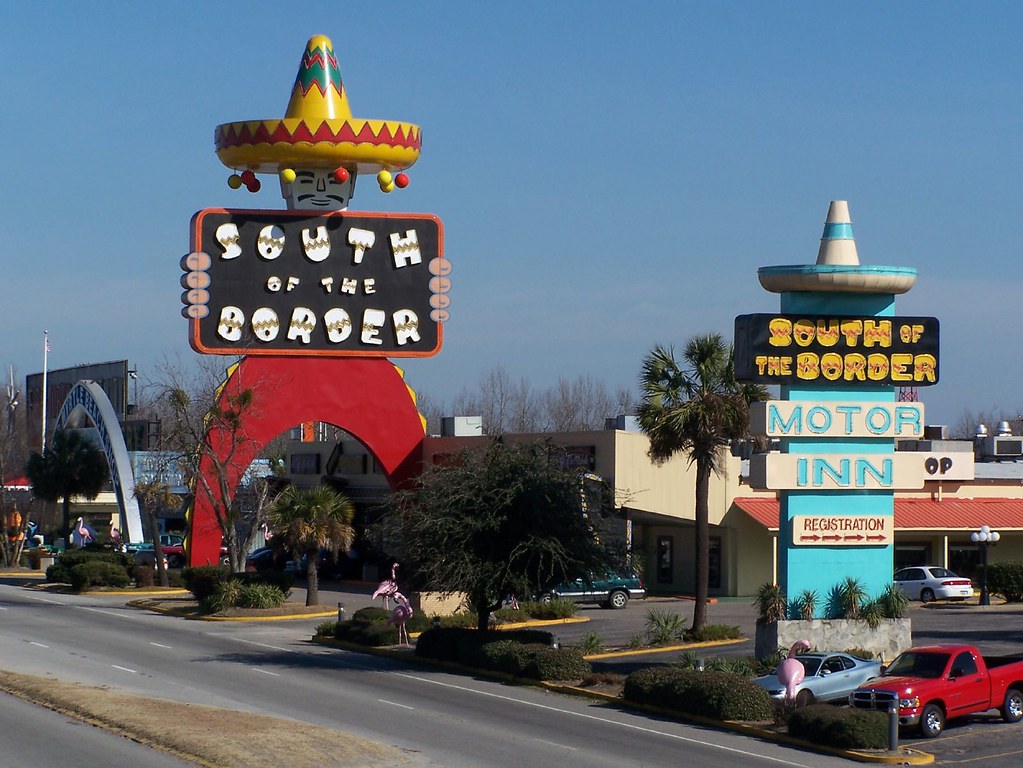When you’re a long-haul driver, you see a lot of this beautiful country…from the cab of the truck. Landmarks, scenic views, and exciting attractions pass by your windshield but you drive on because you have a deadline to meet. But should you stop? Should you fit a little fun into your driving schedule?
Yes! We all know that all work and no play makes Jack a dull boy, so why not try to squeeze in some of the wonderful attractions that our amazing country has to offer? Make your plans ahead of time so you can fit them in your schedule and check with your carrier. They may have rules against bob-tailing. Of course, you can always rent a car, or call a cab or a Lyft.
Whiskey Pete’s
Whiskey Pete’s is a hotel and casino located in Primm, Nevada near the California border. It’s part of the Primm Valley Casino Resorts. You can spend the night, play some slots or catch the whiskey band at Pete’s Place. Primm Valley offers a movie theater, great restaurants, and you can even get in a round or two of golf.
Biosphere 2
Completed in 1991, Biosphere 2 was designed to be a completely enclosed, self–sustaining ecosystem to demonstrate how life could be sustained in space. The 3.14-acre structure is located in Oracle, AZ. In 2011, it was taken over by the University of Arizona for research on the ecosystems on Earth and how they can be sustained in the future. Itand it includes an ocean with a coral reef, a rainforest, mangrove wetlands, a savannah, and living quarters and research facilities. Tours are available for this unique attraction and its parking lot can accommodate trucks.
Arches National Park
Arches National Park is a red-rock wonder in Moab, Utah. Park your trailer in the lot at the visitor’s center and drive through the park where you’ll see more than 2,000 stone arches as well as natural spires and balancing rocks. If you have a bicycle, you could ride through the park or do some hiking.
Mount Rushmore
Mount Rushmore’s majestic sculpture is more stunning in person than on a postcard. It’s located in South Dakota’s Black Hills and is easily accessed by truck with parking in the visitor’s center lot. George Washington, Thomas Jefferson, Theodore Roosevelt, and Abraham Lincoln will be happy you stopped by!
Niagara Falls
Niagara’s astonishing 167-feet tall falls can be viewed from the park, or from the Niagara Falls Observation Tower, or you can see it’s rushing waters up close on the Maid of the Mist tour boat or the Top of the Falls restaurant. Parking Lot 3 can accommodate larger vehicles.
South of the Border
This Mexican-themed attraction gets its name from its location being just south of the North Carolina border. South of the Border is a rest stop that includes restaurants, gas stations, a video arcade, a small amusement park, minigolf, and truck stop. It’s not Disney WorldDisneyworld but it’s a fun way to spend an afternoon.
Route 66
This one is a drive full of attractions. The historic Route 66 was the original highway that led from Chicago to Santa Monica. If you can take this highway along your route, you’ll see attractions like the Uranus Fudge Factory, The Leaning Water Tower of Groom, TX, Meteor Crater near Winslow, AZ, The Blue Whale of Catoosa, OK and lots and lots of diners.
The next time you’re planning your fuel stops and overnights, take the time to find a fun and interesting place to stop. It’ll break the monotony and add some fun to your trip. After all, don’t we all need a little adventure now and then?
Direct Freight Services not only gives drivers a way to search for loads or post the availability of their truck, but it also has many useful features for planning your run like deadhead and trip mileage, weather, and turn-by-turn specific routing. Try Direct Freight today and find a load and plan your adventure!
Sources:
https://www.shutterstock.com/image-photo/las-vegas-apr-28-exterior-view-1413241208
https://www.primmvalleyresorts.com
https://www.shutterstock.com/image-photo/circa-1992-biosphere-2-arizona-425312656
https://biosphere2.org/visit/what-is-biosphere-2
https://www.shutterstock.com/image-photo/view-double-arch-arches-national-park-293792219
https://www.nps.gov/arch/index.htm
https://www.shutterstock.com/image-photo/mount-rushmore-national-monument-south-dakota-240571879
https://www.nps.gov/moru/index.htm
https://www.shutterstock.com/image-photo/american-side-niagara-falls-ny-usa-171241988
https://www.niagarafallsstatepark.com
https://www.shutterstock.com/image-photo/south-carolina-usa-nov-11-2018-1423791755
https://www.shutterstock.com/image-photo/us-route-66-highway-sign-on-544058587

















